Whether you are chasing the northern lights across Norway or discovering galaxies far away from our Milky Way, locating planets through the lens of a telescope, or stargazing all night, Astro tourism is gaining momentum among space nerds, who have a zest for Astro science.
If Big Bang Theory, the Milky Way, supernovae, cannibal galaxies, our solar system, nebulas, Black Hole, glittering stars in the lucid sky fascinates you, then Astro tourism is the recent most exciting travel trend that may inspire you to visit the below-mentioned destinations.
Northern Lights of Iceland
When we plan a trip to Iceland, watching the northern lights remains the top priority among all other incredible things to do. The northern lights appear near the Earth’s magnetic poles and are visible above a latitude of 60 degrees north and below 60 degrees south. Iceland’s geographical settlement makes it a perfect destination to enjoy these incredible dancing waves of light.
There are several northern lights observation spots in Iceland, where you can see the striking blue and green lights dancing in the skies.
Northern Lights or the aurora borealis form due to the solar particles entering the Earth’s magnetic field and ionizing high in the atmosphere, and giving them color. But this activity is not regular, so even during a dark and clear night, you might not get any glimpse of the northern lights.
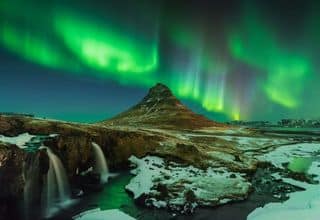
Gila National Forest, New Mexico
New Mexico’s Gila National Forest is a paradise for space nerds, where the US’s first Dark Sky Sanctuary is located. Visit the Cosmic Campground at the Gila National Forest to observe the exceptional and distinguished starry nights. Here campers can admire spellbinding views of the cosmos at night.
It was granted as part of the International Dark-Sky Places Program, a conservation project recognizing stewardship of the night sky. Located 65 km away from the significant source of artificial light across the state of Arizona, the sanctuary offers its visitors a 360-degree uninterrupted view of the night sky.
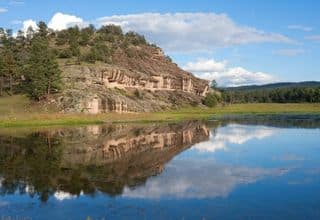
Salar de Uyuni, Bolivia
Salar de Uyuni is among those few places on the Earth that offer a surreal feeling of being a part of something much bigger than yourself. You can gaze up at the solar system at the Salt Flats of Bolivia, which is located 3,656 meters above sea level. Here you can see the entire galaxy with the naked eye when the sun goes down. This 10,000sq km area is uninhabited and offers pristine white terrain without any source of artificial light, which guarantees an intriguing view of the Milky Way.
At night, it gets cold, and the harsh wind may create some troubles, but all these will vanish the moment you start locating a planet, the moon, the sun or track their movements.
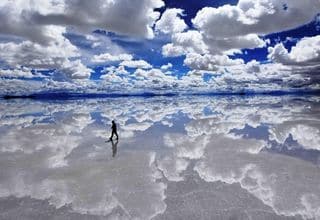
Alpes Azur Mercantour, French
France is not just about Paris or the Disney-inspired castles. The country is blessed with numerous special sites for stargazing, and among them, Alpes Azur Mercantour is a popular spot to spend a night under the starry sky. It is an International Dark Sky Reserve (the third of its kind in France) and makes an ideal escape for amateur astronomers to contemplate the mysteries of the universe.
The first mountain observatories were installed on Mount Mounier by the end of the 19th century, and today only the ruins are left. You can spend a night in an observatory and take a tour of the interferometer of the Plateau de Bure to admire the incredible starry night sky.
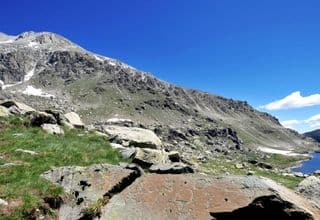
Big Island, Hawaii
Reach Big Island, Hawaii, and head to W.M. Keck Observatory, the largest observatory for optical astronomy. However, visitors are not allowed to use telescopes, but you can use Keck I telescope- one of the world’s largest optical and infrared telescopes in the world.
It is located near the equator, making it the only place in the USA where you can see the Northern and Southern Hemisphere. Enroll yourself in one of the free stargazing programs to know more about the island’s geological aspects.

Fairbanks, Alaska
Fairbanks- the land of the Midnight Sun in Alaska sits at the nexus of the Arctic to the north, Canada to the east, and Denali to the south. Tourists from across the globe visit Fairbanks to admire the otherwise rare sight of the midnight sun and Northern lights during spring and summer. The midnight sun is only above the Arctic circle, where the sun never fully sets.
This northern phenomenon attracts tourists during Midnight Sun Season that runs from April 22 to August 20.

Grand Canyon, Arizona
Arizona’s Grand Canyon is a great stellar stargazing destination. The surrounding atmosphere is clean, dry, deserted, and the nearest source of artificial lights is far from here. Space nerds and astronomers bring their telescopes to trace the celestial movements in the night sky here.
The Grand Canyon might be glorious during the daylight, but the darkness brings out the other side of the Canyon. The National Park Service once stated, “half the park is after dark” and received International Dark Sky Park Certification. Visitors who come to the Canyon spend the night above the canyon rim. The South Rim is a popular place to stargaze. However, make sure to plan your trip during summer when the weather is clear.
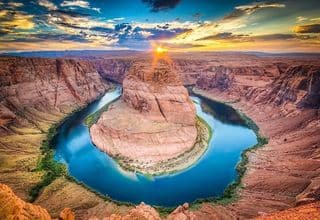
Rocky Mountains
Colorado’s Rocky Mountain National Park is the perfect spot for astronomers and space nerds to admire the breathtaking view of a vast sky glittering with millions of stars.
Even if you are a novice, you can always seek guidance from a ranger or an expert astronomer. Locate a meteor or our solar system with a telescope and enjoy the intense experience.
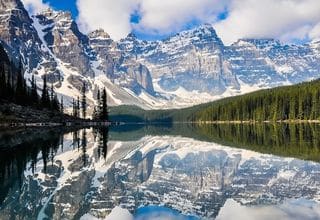
Wrap Up
Just because darkness engulfs the Earth doesn’t mean there is nothing to see. For astronomers and space nerds, darkness brings the real shows, packed with millions of twinkling stars, galaxies, our solar system, the planets, the moon, and the sun. Although too much human interference has polluted our air and it is impossible to stargaze, there are still some remote locations on Earth that are unadulterated and offer once-in-a-lifetime opportunities to see the universe.
If this is something that entices you, then book your flight, bring your telescope and head to the destinations mentioned above.